Best Weights For Fly Fishing: Everything You Need To Know
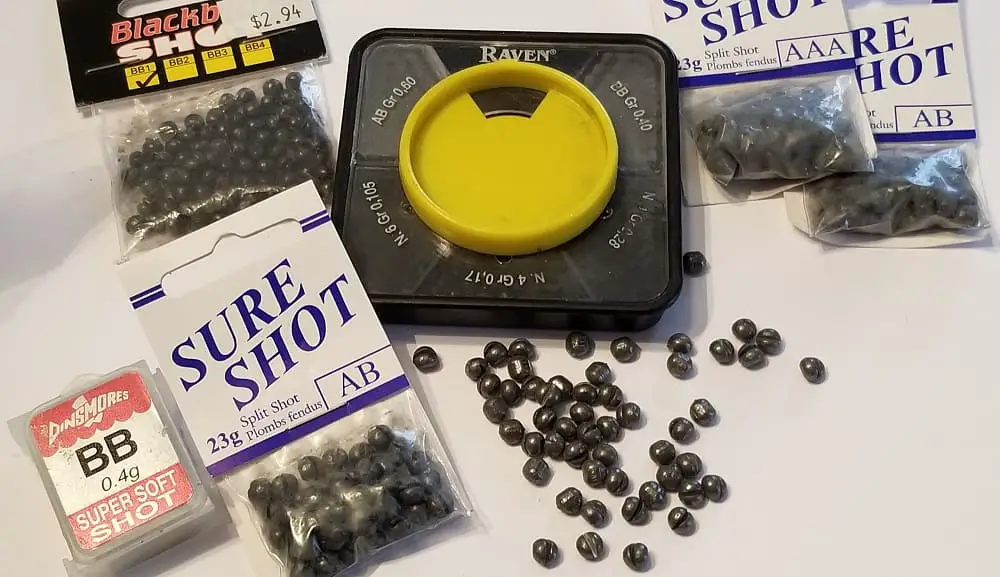
Most guides, myself included, use weights when we fly fishing because it’s an effective way to get my fly down to the fish fast, and the weights keep the fly in the strike zone. But I’ll be honest with you; there are some weights for fly fishing that guides use, then there are some weights that are crap and will prevent you from catching fish.
In a nutshell, this is what you want to know about fly fishing weights.
- Split shots and tungsten sinking putty are the only weights you should be using for fly fishing.
- Only use single-use split shots. These are the ones that don’t have the little removable wings.
- Only use split shots that are grey, dark grey, olive, or a darker drab color. DO NOT use shiny silver split sots.
- Don’t use giant split shots. Two or three smaller split shots are better than one huge split shot because the smaller shots are more streamlined for better casting and presentation.
- Softer split shots are better, especially on very thin tippets. Hard lead split shots can damage the line. Softer shots are also easier to slide on the line if and when needed.
- My favorite split shots are the SURE SHOT brand. Most of my guide buddies use Sure Shots, Blackbird Shots, or Raven Soft Shots.
- I mostly use one or two AB, or AAA sized shots, and occasionally I’ll go with smaller BB sized shots.
- Lead split shots are illegal in some areas, so tungsten or tin shots can be used. I discuss these below.
I also give you my honest opinion on the mutli-size shot dispensers, so if you want more details, keep reading.
We may make a small commission from some of the links on this website, which is at no cost to you. I appreciate your support. Learn More
What Are The Best Weights For Fly Fishing?
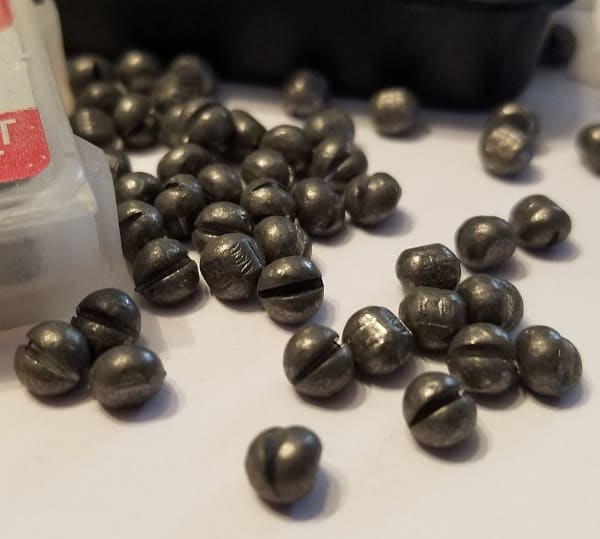
The best weights to use when you fly fish, especially nymph fish, are split shots. I also use these same weights for all my float fishing leaders and my bottom bouncing leaders.
Split shots are small round lead or tin weights that have a slit in the middle which allows the weight to be easily pinched onto the line.
Some good split shots can also be egg-shaped. I do not use bell weights or pencil weights when fly fishing.
Split Shot Color: What’s Good and What’s Bad
The best split shots are the ones that are dull and dark in color so that the fish do not see them as a threat.
The bright shiny silver split shots are not recommended since these can actually spook weary trout. These shiny split shots are often the really cheap weights you see in the big box stores. Avoid these if you can.
Good split shots are a dark grey in color, but you can now get some that are green or brown or even camouflage color.
Are Lead Weights The Best?
Old-school weights use for fly fishing are made out of lead, and these are by far the most common type of weights.s.
For lead split shots, I use the Sure Shot Brand because this is a softer weight that goes on easily and doesn’t damage thin leaders. Sure Shots are my favorite of all the weights I have tried.
Tin Weights
When lead started becoming banned, other weights made out of tin started to become available.
Lead split shots are heavier than tin split shots, so I still use lead more often, but when I fish in some states that have banned lead split shots for angling, I use tin split shots and the best ones I have tried are the Orvis Non-Toxic Oval Split Shot and the very popular LOON TIN DROPS SPLIT SHOT instead.
NOTICE: There are also some rivers and some sections of rivers where adding any type of weight on the line is not allowed so check the regulations before you fish.
Tungsten Split Shots: The Newest Weight For Fly Fishing
Aside from not being banned yet, one of the primary advantages of these tungsten split shots is they are much smaller than lead shots that weigh the same. Smaller weights create less drag in the water and get hung up less.
These tungsten weights are also reusable.
Some of the issues with this weight is quality control, and they are hard to find sometimes.
Tungsten Weight Is Great For Fly Fishing

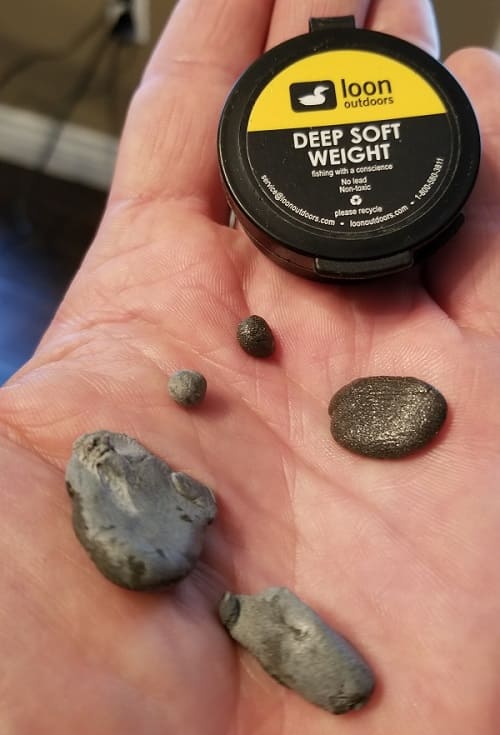
For the last five or six years, I’ve drastically cut my use of lead weights down, and during the warmer months, it’s rare to use lead or tine split shots when fly fishing. Instead, I use a great alternative to lead which is tungsten putty weight and tungsten split shots.
During the warmer months, I prefer tungsten putty over split shots.
Tungsten is heavier than lead and the putty is the consistency of a new piece of bubble gum.
You simply rip off a small chunk of putty and mold it into a football shape or a round ball onto the line.
The reason why I think tungsten is better than split shots, is that I can add and remove it easily when I need to.
It’s also reusable so it lasts a long time, and I don’t think it’s as toxic as lead.
Once you add split shots onto the line, you can’t really remove them. Cutting the fly off the line and trying to slide the split shots off the line often damages the line.
With the tungsten putty, I can easily add it to the line, then add more putty to make it heavier if need to. I can also remove some if need to, and I can remove it completely without damaging the line.
Making weight adjustments like this allows me to get the perfect weight for each spot that I fish.
The downside to tungsten putty is that if you don’t check it every few drifts it can come off the line. Especially if you rip the flies out of the water on your forward cast.
Tungsten putty can also slide down the line to the fly, which is not good, but so can split shots. The putty can also get very soft and sticky, like gum, in the summer, but once you put it onto the line and it hits the cold water it will harden up.
The big problem with tungsten putty is that in the winter, when it’s very cold out, the putty will get hard as a rock making it very difficult to mold onto the line and to get off the line. I do not use tungsten putty in the winter for this reason.
I prefer the Loon Deep Soft Weight Tungsten Putty. I have seen the Loon Brand being sold from $10 up to $15 dollars, so check the prices.
What Size Split Shots Are Best?
You do not want to use huge weights when you fly fish. Instead, you want to go as light as possible.
I use BB-sized split shots when a little weight is required or AB shots when I want a slightly bigger weight. I’ll even go up to AAA size split shots when fishing deeper or faster water for steelhead and salmon.
Some brands rate their split shots with a letter system, like BB, AB, AAA, and/or a number system. See the Size chart table for basic sizing.
Size | Weight In Grams |
6 | 0.11 |
4 | 0.20 |
1 | 0.30 |
BB | 0.40 |
AB | 0.60 |
AAA | 0.80 |
Where Do You Put The Weights On A Fly Leader?
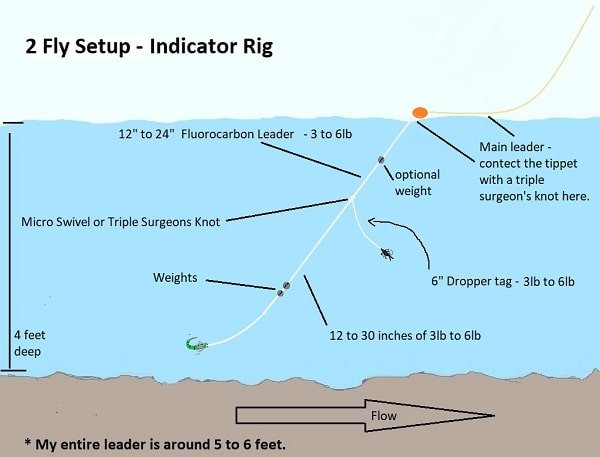
It’s best to put the weight on the leader or on the tippet.
Depending on how you set up your fly leader, your weights should be close enough to the fly to sink the fly to the bottom of the river where the fish might be feeding.
The standard leader setup as seen in the picture, can be used in almost any moving river. If you are not sure where to put your split shots, see my short article Where Do Weights Go On A Fly Leader?
GUIDE TIP – I will often tie in a triple surgeon’s knot into the line just below the weights to prevent them from sliding down to the fly.
For my other two fly leader patterns, including my favorite leader, check out my page 2 Fly SetUp For Nymphs: How to Set It Up And Fish It Better.
Do Split Shots Weaken The Line?
Some lead and tin split shots are harder than others, and I believe that a hard split shot that is pressed on too hard with pliers can dent and weaken the line, especially really thin lines. I like the Sure Shot Brand of split shots because they don’t damage the line.
How To and How Not To Put Split Shot On?
Some of the softer split shots can be squeezed onto the line if you have strong fingers.
Once pressed on the line with my fingers, I will then squeeze them tighter with forceps or pliers. Do not squeeze them so tight that they deform or lose shape. They are round or egg-shaped, so keep them that way.
Pro Tip- Lead split shots will often have lead dust on them that you may not see with your eyes, so DO NOT BITE or squeeze the split shots onto the line with your teeth because this lead dust is very toxic.
How Many Splits Shots Should You Use On A Fly Leader?
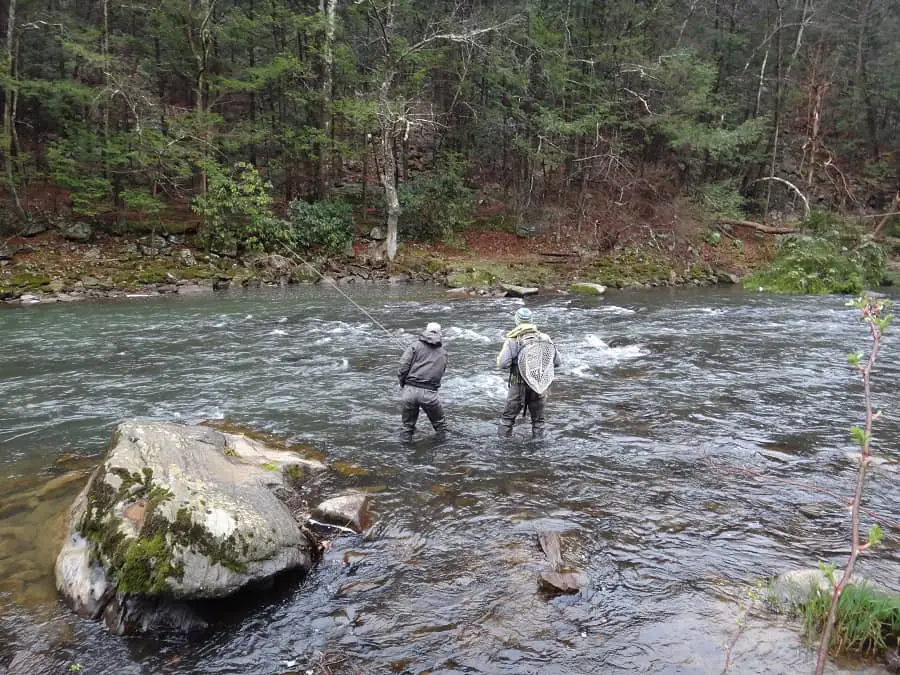
I only use just enough split shots to get my flies to the bottom in a few seconds. The fewer split shots you use, the less you will get hung up on the bottom, and the more natural your presentation will be.
Some anglers use a method called chuck and duck, which is when you add a lot of weight onto the line. I tell my clients that they call it this because they add so much weight that if it hits you on your forward cast, it will hurt, therefore you need to duck to get out of the way.
In most river conditions that you will find on small to medium-sized rivers, there is no need for this type of fishing.
Pro Tip: I do not use or recommend the Multi-pack shot dispensers with a variety of split shots. Often, you will only use one or two sizes, so just go buy those. However, this is a matter of opinion.
Tight Lines
Graham
Resources:
Toxic effects of lead exposure on bioaccumulation, oxidative stress, neurotoxicity, and immune responses in fish: A review

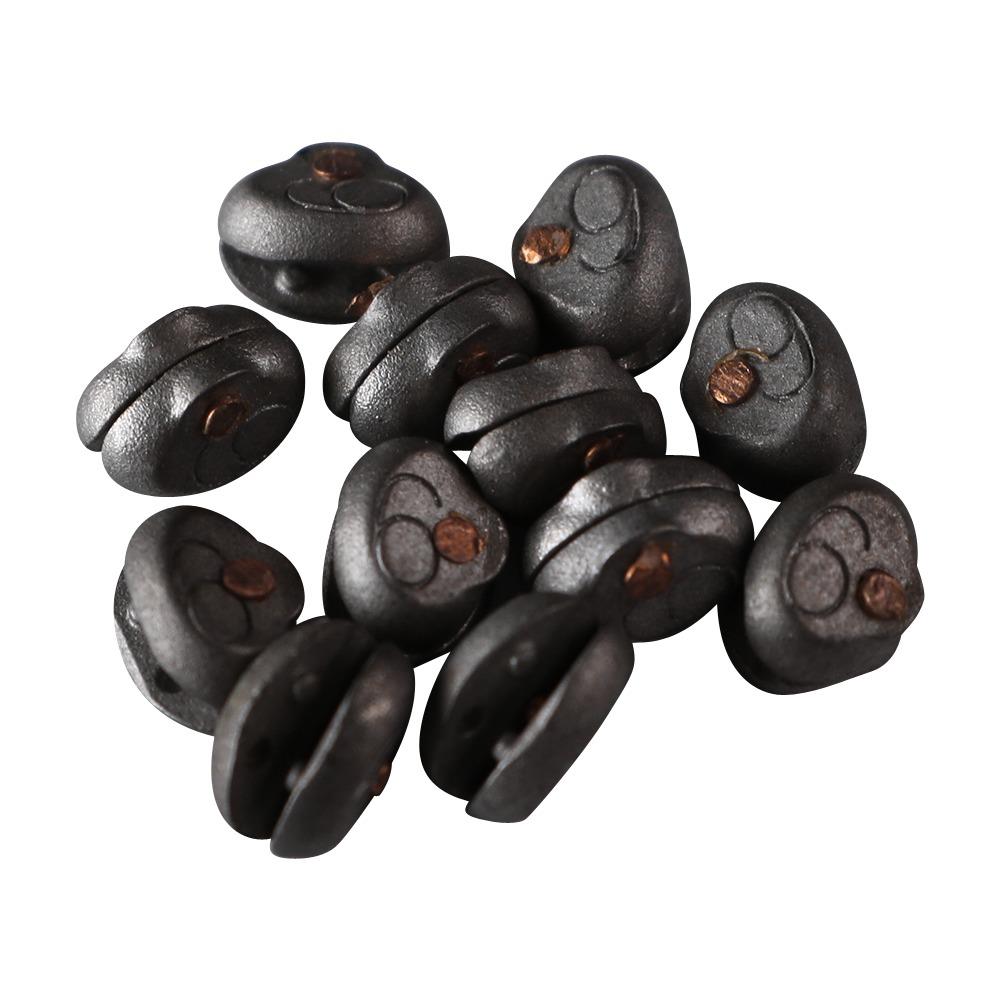
Hi Graham,
Any reason I can’t slide a tungsten bead down the tippet to sit on the fly knot instead of using a beaded nymph? Then I could carry unweighted nymphs and weight them to suit the particular water.
Cheers,
G
Hey G,
It might work since in my opinion, fish are pretty dumb!!
Adding a bead in such a way will change the length and profile of the nymph, I’ve never done it so I can’t say for sure if it will work. If you try it let me know how it works for you.
Graham
I reckon G is on the right track. If you have a tippet ring approximately 12 inches above the fly and add a sliding knot then you can thread a bead on and move it anywhere on that 12 inches. Removing beads or using different sizes is relatively simple though does involve tying and cutting a new knot at the tippet ring each time.
The sliding knot is made by making a loop from a couple of inches of nylon as per an uni knot.